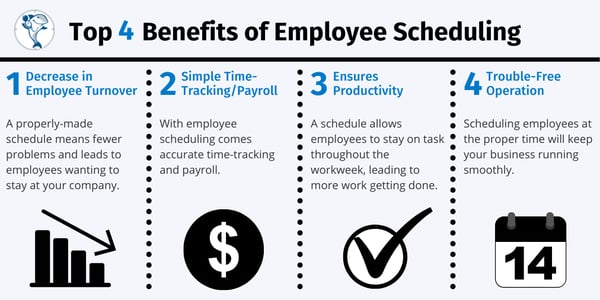September 30, 2025
 by Cristina Johnson / September 30, 2025
by Cristina Johnson / September 30, 2025

Do you bear the brunt of losses and receive bitter and cold looks when the performance graph goes down?
When employees underperform, the curse of low numbers is dumped on higher-level employers and HR teams. The most common reason for employee inattention is employee absenteeism.
Employee absenteeism refers to frequent or habitual absence from work without valid reasons. It can result from health issues, job dissatisfaction, poor management, or personal problems. High absenteeism reduces productivity, increases operational costs, and affects team morale in most workplace environments.
Innocent absenteeism occurs for legitimate reasons, but culpable absenteeism occurs when an employee deliberately avoids work.
Taking regular days off from work, arguing at the workplace when asked to give work updates, and taking day-long lunch breaks are all signs of employee absenteeism. Left unaddressed, absenteeism increases project delays, drives up costs, and leaves teams stretched thin. According to the Bureau of Labor Statistics, the national absence rate was 3.2% in 2024.
The most effective way to tackle it isn’t stricter policies, it’s prevention. Using employee engagement software with absence management software helps organizations identify patterns early, boost motivation, streamline leave tracking, and foster a culture where people want to show up.
Together, these tools transform absenteeism from a recurring setback into an opportunity to strengthen workforce productivity and performance.
In this guide, we’ll break down what employee absenteeism is, why it happens, and how companies can reduce it before it starts impacting the bottom line.
Employee absenteeism isn’t just an HR headache — it’s becoming a critical business challenge in 2025. As organizations adapt to hybrid work, shifting workforce expectations, and rising burnout, absenteeism is quietly eroding productivity, profitability, and team morale behind the scenes.
According to the Bureau of Labor Statistics (BLS), 119,988 full-time employees who typically work 35 or more hours a week worked less than 35 hours during the reference week, meaning were absent from work. This isn’t a minor dip; it’s a clear signal that absenteeism is becoming more frequent and more disruptive across industries.
The impact extends far beyond a few missed workdays:
To tackle absenteeism effectively, you need more than a surface-level fix — you need clarity. That means understanding what kind of absenteeism you’re dealing with, uncovering the root causes behind it, and knowing how to respond before it starts affecting team performance.
Whether it’s disengagement, burnout, or deeper cultural issues, having this insight empowers HR teams and managers to design policies, interventions, and support systems that actually work.
Not all absenteeism is the same, and treating it as a one-size-fits-all problem often leads to ineffective policies. It can also create resentment among employees.
Understanding the different types helps HR teams and managers diagnose what’s really going on and respond with the right strategies. Broadly, absenteeism falls into these categories:
This occurs when employees miss work for legitimate, unavoidable reasons like illness, medical appointments, family emergencies, or bereavement. While it’s often unavoidable, frequent occurrences may still signal issues like poor health benefits or lack of flexible policies.
This refers to unauthorized or deliberate absences like, skipping work without notice, calling in sick without being ill, or taking extra time off beyond approved leave. These cases require clear attendance policies and consistent enforcement.
This includes approved leaves such as vacations, parental leave, or scheduled time off. While expected, poor planning around them can still disrupt workflows and productivity if not managed properly.
Unscheduled absences, often due to sudden illness, personal emergencies, or disengagement, are harder to manage and have a bigger impact on productivity and morale. A spike in unplanned leave can also hint at deeper organizational issues.
When absenteeism becomes frequent and recurring over time, it signals a serious problem, often tied to low engagement, burnout, workplace culture, or personal challenges. Chronic absenteeism requires early detection and targeted intervention.
Now that you know the different forms absenteeism can take, it’s equally important to understand where the line is drawn. Misunderstanding this distinction of what actually qualifies as absenteeism and what doesn’t can lead to confusion, inconsistent policies, and employee frustration.
What it is:
What it is not:
Tackling absenteeism effectively means looking beyond attendance records and uncovering what’s driving those missed days. Each absence tells a story about how employees feel, how policies function, and how culture impacts daily work. Understanding those underlying reasons is the first step toward preventing absenteeism rather than just managing it.
Here are the most common reasons behind employee absenteeism today.
Low engagement remains one of the strongest predictors of absenteeism. When employees feel disconnected from their work or believe their contributions aren’t valued, they’re less motivated to show up consistently.
Quiet quitting, where employees do the bare minimum or emotionally detach from their roles, often leads to increased sick days, frequent late arrivals, and longer absences. These are signs that the problem goes beyond attendance and stems from a lack of purpose, recognition, or growth opportunities.
While flexible work models have many benefits, they’ve also changed how absenteeism shows up. In remote and hybrid environments, absenteeism can be less visible but equally disruptive. Missed virtual meetings, delayed responses, or extended offline periods are all forms of “digital absenteeism.” This often occurs when boundaries between work and personal life blur, leading to burnout, disengagement, or difficulty staying accountable without in-person oversight.
Chronic stress, unrealistic workloads, and lack of rest push employees to take more frequent time off — sometimes without notice. Burnout-related absenteeism is rising across industries, often disguised as sick leave or mental health days. When employees consistently feel overwhelmed, absenteeism becomes a coping mechanism rather than a deliberate choice.
Absences due to illness, medical conditions, or family responsibilities are common and often unavoidable. These instances shouldn’t be treated as problems — but recurring patterns can highlight where the organization could do more to support its people. Stronger wellness initiatives, more flexible leave policies, or additional resources for caregiving employees can help prevent these absences from becoming overwhelming for teams.
A negative work environment, marked by micromanagement, lack of trust, or workplace conflict, drives absenteeism. Employees are more likely to avoid coming to work if they associate the environment with stress or hostility. High turnover, communication breakdowns, and frequent absences are often symptoms of deeper cultural problems.
Vague or inconsistently enforced attendance policies leave room for misuse. When employees don’t fully understand what’s acceptable or believe consequences won’t follow, absenteeism rates often increase. Clearly defined policies, paired with fair enforcement, help set expectations and reduce unnecessary absences.
Most companies understand the legitimate reasons for employees' absences. Chronic health conditions are caused by some and others by personal causes, including family issues and elderly or child care.
Intentional absenteeism is more ambiguous. The most common times of absenteeism are Mondays, Fridays, and around holidays, sporting events, or festivals. Individuals most likely to intentionally miss work are those who:
Ultimately, these reasons boil down to stress and personal needs, and it’s up to employers to identify the issues behind the absences and how best to resolve them.
There is no way to be subtle about confronting an employee who takes it lightly. While you suffer the aftermath of their underperformance, taking a few firm measures is necessary for them to accept their wrongdoing.
Unfortunately, leaders sometimes have to hit where it hurts. Being lenient and kind regarding an employee's absence is good for a temporary period. However, if you can spot an employee's productivity declining, use a reward and penalize mechanism.
Be open to crediting employees who aced their tasks and not those who indulged in procrastination and longer work breaks. This sounds extreme, but you must rip the band-aid to heal the bruise. This practice would shock the employees' systems and motivate them to work harder.
Talking the employee through their concerns, questions, and worries and understanding what support they need from your end is also a good way to have the talk. Identifying where the employee might need guidance and support and putting employees on a performance improvement plan (PIP) also initiates a final call in an employee's mind to work hard and level up in performance.
However, if the employee continues to showcase disinterest and absenteeism, the final call is to let them go.
HR can mediate between an employee and an employer. It also can take a neutral stand and build peace treaties for the smooth functioning of an organization. If you can sense discomfort and distaste from your employees, suggest politely to speak to the HR team or schedule a 1x1 with any higher level authority to exhibit transparency and good workplace culture.
Again, cutting someone's appraisal might sound merciless. However, when an organization suffers millions of dollars in loss due to employees' lack of work sense and underperformance, reducing appraisal checks is a certain outcome. Convey the reduction in appraisal to the employees who don't take their work seriously and warn them to buck up and take their work seriously to continue growing in their careers.
According to the Bottom Line Killer, unscheduled chronic absenteeism conservatively costs $3600 per hourly employee per year and $2650 per salaried employee per year and is the main worry for US employers. Depending on the size of your business, you could be losing anywhere from thousands to millions of dollars due to absenteeism. Here’s how you can take charge and reduce absenteeism in your organization.
Before tackling the issue of absenteeism, you should develop a comprehensive absenteeism policy that everyone clearly understands. This policy will ideally cover:
Research has found that absenteeism policies that include recognition and rewards for being present and consequences for excessive absenteeism are more effective. Rather than having a policy that only provides for negative consequences, try to include some positive reinforcement policies as well.
A great attendance policy will guide everyone, not just on what is expected but also on penalties and rewards for absenteeism. The policy should clearly define the differences between excused and unexcused absences.
An excused absence includes those where:
Unexcused absences are those that don’t meet any of the above-mentioned guidelines. There are times when emergencies happen, and your policy should allow that. For example, if an employee experiences a sudden sickness or accident/injury, this can’t be controlled, so ensure you have something in place to address such instances. In these cases, you can require the employees to provide you with a doctor’s note or proof of their absence.
Sometimes, a valuable employee might experience a personal hardship, perhaps a death in the family, transportation problems, or a sudden need to relocate. Remember such instances when building a comprehensive attendance policy because these things can and do happen. You don’t want to have to terminate an employee for an unfortunate personal event or circumstance.
Depending on your company’s structure, keeping track of absences can be more challenging for some than others. Brick-and-mortar establishments can physically monitor employees when they are working. However, many of today’s organizations are offering either remote work or flexible scheduling. In fact, remote work has increased over the past 10 years by a staggering 91 percent.
Companies with field or remote workers face unique challenges when tracking absences. In these situations, cloud-based, time-tracking, and shift-scheduling technology can be a lifesaver. Scheduling is critical for maintaining productivity, decreasing turnover rates, keeping operations running smoothly, and assisting in payroll and time tracking.

Even for in-office establishments, there are new, more accurate, and effective ways to use things like kiosk clocks and web-based time tracking solutions that simplify tracking employees’ hours and absences. No-show and no-call employees cost companies a lot of money, as well. If an employee is a no-show/no-call worker, make sure you have a clear process on how to deal with it.
Once you have a plan to monitor absences and an absenteeism policy, you and your employees will be clear about what they can expect with repeated, unapproved absences. Bear in mind that you must be prepared to follow these procedures.
If you have an employee who is historically punctual but suddenly tardy more often than not, there may be a legitimate reason why. Likewise, employees who are typically reliable but become frequently absent might be experiencing something outside of work that’s affecting their presence.
As their leader, you must determine whether excessive absenteeism or tardiness warrants consequences (e.g., blatant disregard) or if it could be remedied with an adjustment to their scheduling (e.g., transportation or childcare issues).
To figure out how many absences are too many, consider the averages. There are currently no PTO requirements from the federal government, but many companies are required to honor the Family and Medical Leave Act (FMLA) which provides up to 12 weeks of unpaid leave.
The CDC’s most recent data show that adults ages 18 to 64 missed an average of four days of work from the previous year. The BLS reports that over half of employers provide five to nine days of paid sick leave after one year of service; a quarter offers fewer than five days, and another quarter offers more than 10 per year. Depending on the size of your organization, these numbers can help you determine how many absences are too many for your specific business.
When you have an absentee policy, it’s important to stick to it. Excessive absenteeism doesn’t just cost in dollars. Research shows that around 45.5% of respondents reported absenteeism in 4 weeks and were losing an average of 48.7 work hours.
While its root cause is difficult to understand, enforcing a few employee policies for offenders might reduce these numbers.
For habitual offenders, a plan of action might be:
It’s important that you, your supervisor, or the HR department keep accurate records of all of these offenses and the corresponding actions taken. It’s also important to ensure that everyone is treated with the same expectations and consequences. This helps control excessive absenteeism and improves company morale.
You should also ensure you are prepared to follow up with the procedures outlined. Of course, terminating someone is uncomfortable, but sometimes, it is essential for the company's betterment and overall employee morale.
Praise and recognition for a “great job” are appreciated by workers, naturally, but these blanket praises don’t really address their punctuality specifically.
Rather than remarking positively in general, try to be more specific: I love how reliable you’ve been. It’s great to be able to count on you being here. I love the fact that you’re always on time.
These statements reinforce a specific action that psychologist Carol Dweck says is much more effective in motivating and inspiring people.
Technology can make a huge difference in reducing absenteeism. The right mix of tools helps HR teams spot early warning signs, improve engagement, and streamline attendance processes. Here are a few categories to consider:
Not sure which tools will make the biggest impact on reducing absenteeism? G2 AI
can help. Just tell it what you’re trying to solve, from engagement challenges to attendance tracking, and get personalized software suggestions based on real user insights and category data.
An attendance policy doesn’t have to be complex and complicated, full of legal and HR jargon. A simple example is something like this:
Good attendance is essential to every job and demonstrates a responsible, professional attitude. Conversely, unexcused or excessive absences are serious offenses.
Please follow these guidelines when you are absent:
No definite rule can govern discipline for excessive absenteeism or tardiness. Individual circumstances and job demands differ. Therefore, we reserve the right to discipline you for excessive absenteeism or tardiness any time we determine that your absences or tardies, if not protected by law, are unreasonably disruptive to our work or detrimental to efficient operations or employee morale.
We hear much about things like work/life balance, employee well-being, and company culture.
That’s because having a healthy work environment that promotes overall well-being is actually helpful for companies’ bottom lines. Happy workers are more productive, so if you’re seeing a decline in employee morale, engagement, and presence, it might be a good time to take a look at your workplace culture.
When your employees feel they are a part of something bigger than themselves and matter to your company, they will be likelier to perform their best. Instead of finding excuses to miss work, they will embrace their role in your organization because they feel it is important and not just a way to earn a paycheck.
Remember, your attendance policy doesn’t have to be so complicated that nobody can understand it, nor does it need to be overbearing. Consistency and simplicity can go a long way.
Ensure it is included in your employee handbook and distributed throughout your workplace so everyone knows your expectations for their attendance. Ensure that all supervisors are also clear on the expectations and consequences associated with absences. If you have one supervisor or team leader going “by the book” and another who tends to let things slide, you risk creating an environment of mistrust and inconsistency.
Yes, but you should consider the genuineness of an employee’s illness. You can request prescriptions stamped by a medical professional. Also, check whether they are under legal protection, like employees with disabilities or accidental insurance.
You should be subtle in your approach. Communicate that excessive absenteeism leads to company fallout and cash flow issues, and try to signify the relationship between their laid-back attitude and declining team productivity.
Leave records, project incompletion data, late clock-ins and early clock-outs, project quality control, and comparison with a peer can act as evident records of employee performance, which can report employee absenteeism.
It can include mundane excuses like road traffic, construction problems, mental well-being, or attending a personal event. While these can be legitimate reasons to leave early, excessive or repeated usage of these terms can hint at employee absenteeism.
Be clear with your findings about employee absenteeism. Have all the hard data handy to support your claims. Conduct self-audits of the responsible employee’s work and notice where their performance dipped. After gathering proof, you can report the incident.
While we can’t eliminate absenteeism completely, it is clearly a problem that most companies face. With planning, communication, transparency, and accountability, your company can significantly improve productivity and efficiency by ensuring your people come to work when they should and enjoy their time there.
Another less conventional way to deal with employee absenteeism is introducing an unlimited PTO program to your office. See how you might benefit from a shift in policy today.
This article was originally published in 2020 and has been updated with new information.
While we can’t eliminate absenteeism completely, it is clearly a problem that most companies face. With planning, communication, transparency, and accountability, your company can significantly improve productivity and efficiency by ensuring your people not only come to work when they should but even enjoy the time they spend there.
Another less conventional way to deal with employee absenteeism is introducing an unlimited PTO program to your office. See how you might benefit from a shift in policy today.
This article was originally published in 2024. It has been updated with new information.
Cristina Johnson writes for ClockShark, a leading time tracking app for construction and field services. She is a marketing writer and international journalist specializing in corporate social responsibility, human resources, and company culture.
I joined G2 during the pandemic while working completely remotely, which made me realize just...
.png) by Tanuja Bahirat
by Tanuja Bahirat
A few days before our quarterly all-hands, we realized we had a problem.
.png) by Devyani Mehta
by Devyani Mehta
Let’s face it, even the most perfect employee is going to miss work at some point.
 by Mara Calvello
by Mara Calvello
I joined G2 during the pandemic while working completely remotely, which made me realize just...
.png) by Tanuja Bahirat
by Tanuja Bahirat
A few days before our quarterly all-hands, we realized we had a problem.
.png) by Devyani Mehta
by Devyani Mehta

